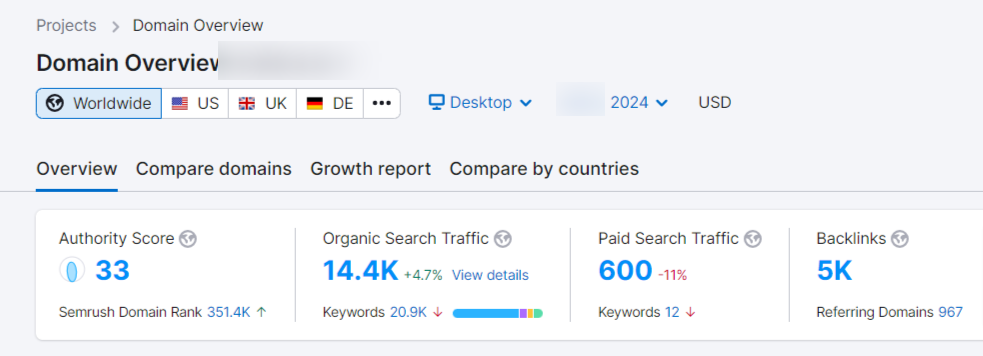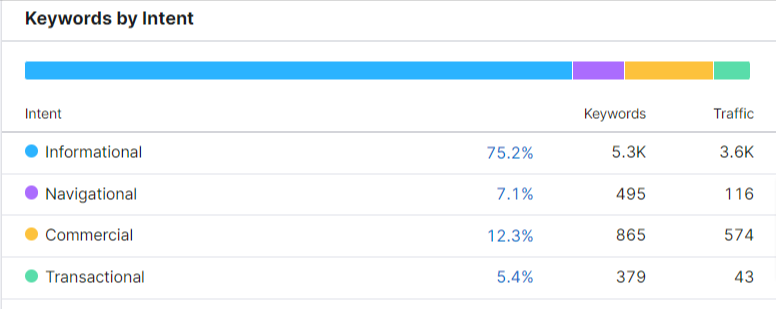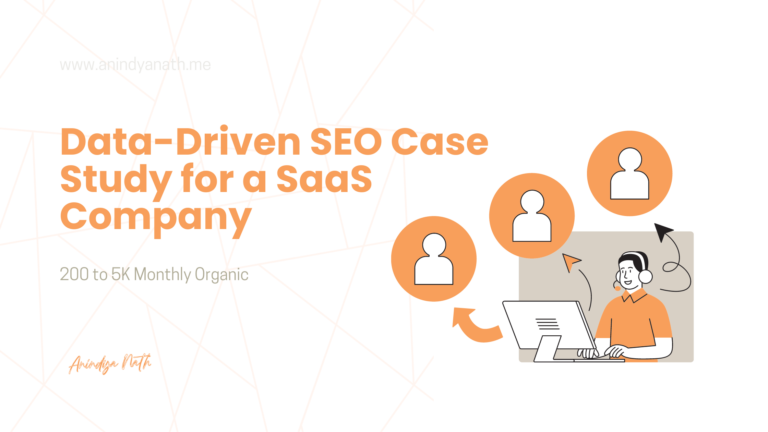SEO Case Case Study On SaaS-Based Clients from 200 to 5K Monthly Organic in 6 Months

Breif About The SaaS Company
We collaborated with a SaaS company in the software sector to improve their organic search presence.
At the outset, the client’s website had 200-300 monthly visitors, over 30 blog posts, and roughly 500-600 keywords indexed according to a SEMrush report.
Tools Used:
SEMrush | GSC | Google Analytics | Screaming Frog.
My Tasks:
Part 1: For existing content:
- Provide content improvement suggestions, including intent, internal linking, keyword distribution, and other on-page SEO factors.
- Competitor research to identify keywords and content breakdown.
- On-page suggestions for feature pages of the website such as title tags, meta descriptions, and image optimization.
Part 2: For the next 3-month plan:
- Suggested topical content strategy.
- Keyword targeting for the Indian market.
- Suggestions on the help docs section.
- Suggestions on the single-page blog.
Breakdown of the Work & Process:
Content Improvement:
- We used Google Search Console (GSC) to export a list of all blog posts, and then sorted them by performance, with the highest-performing at the top.
- We divided the 30 blogs into three groups: those with the most clicks, those showing some traction, and those with low performance.
Approach:
- For the first group, we made minor changes to improve user experience, such as adding missing alt text and breaking down large text chunks into smaller, more digestible sections. We also enhanced internal linking where possible.
- For the second group of blogs with some traction, we focused on optimizing key elements. This included revising meta tags and descriptions, analyzing keyword density for optimal distribution, and enriching the content with additional information. We also implemented on-page optimization techniques
- The third group of low-performing blogs presented an opportunity for content consolidation. We reviewed all associated target keywords and merged content with significant overlap. This streamlined approach will enhance the overall quality and focus of our content.
Competitor research:
- We conducted an in-depth analysis of the content strategy of three key competitors, including a breakdown of their target keywords and content patterns.
- Utilizing SEMrush and Screaming Frog tools, we retrieved and analyzed our competitors’ keyword and content lists.
- By cross-referencing this data with our own mapped keywords, we identified a significant opportunity by uncovering over 50 new, relevant keywords to target in our content strategy.
Feature Pages:
- The project included 4-5 product feature pages with significant potential to rank for industry-specific keywords.
- Recognizing this opportunity, we implemented a comprehensive on-page SEO optimization strategy for these pages.
3-month plan
- Targeting the Indian Market: We identified an opportunity to expand the client’s reach beyond the US market.
- To achieve this, we recommended a targeted content strategy focusing on the Indian market.
Approach:
Topical Content Strategy:
- To create content relevant to the Indian audience and our product niche, we proposed developing a topical content strategy.
- This strategy would involve identifying a specific target audience segment within the Indian market and then creating content that addresses their broad search queries related to our product’s functionalities and benefits.
Help Docs
- To enhance user experience, we recommended improvements to the client’s help doc section. This included design suggestions for the main help doc page to improve its usability and navigation.
- Additionally, we proposed a strategy for incorporating internal linking within relevant blog posts, making it easier for users to discover helpful content directly related to their questions.
Single Blog Post Suggestions
- Suggested to improve single blog page – to include a Table of Contents (ToC) on the sidebar to improve UX, include GIFs or videos of the SaaS product in the blog section where feasible, and include CTA of using the SaaS product at the end of the blog such as “Try our Free Trial”
Notable Results
After 1 month of implementation. We started to see growth. Here are some screenshots of the growth in 3-6 months and overall.



We encountered challenges in fully executing all aspects of the SEO strategy due to prioritization within the client’s team. Despite these hurdles, we gradually improve in three to six months.
It’s team work: A successful collaboration with my team members played a key role in achieving these results.

